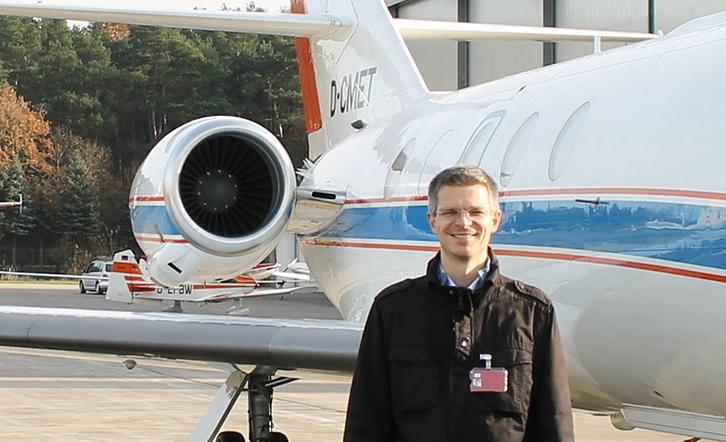25/11/19
SENS4ICE newsletter No 1: Interview

Interview with the coordinator of the SENS4ICE project
Dipl.-Ing. Carsten Schwarz
Question 1 (Q1): As the coordinator of the SENS4ICE project, could you please tell us the objectives and main stakes of this initiative?
Answer 1 (A1): The overarching objectives of the project are to increase the flight safety in icing conditions and especially for SLD conditions (supercooled large droplets). The data and knowledge gathered will also contribute to increasing the knowledge base in this area. This will be done by maturing individual direct and indirect detection technologies and by developing a hybrid ice detection system able to reliably detect all liquid water icing conditions and reliably discriminate icing conditions corresponding to Appendix C and O of the airworthiness standards/ certification specifications FAR Part 25 / CS-25. It is a technologically very challenging and complex project, with high level of interaction between technology developers, icing wind tunnels and flight testing, ultimately aiming at a certifiable detection system architecture.
Q2: How and when was the idea of SENS4ICE born? What was the initial assessment which led to the SENS4ICE project preparation?
A2: Based on extensive experience and fruitful cooperation from previous aircraft icing activities, the trigger was a dedicated call for tenders by the European Commission, aimed at developing European aircraft icing expertise and enabling safe operation in SLD conditions.
Q3: What is innovative about the activities carried out in the project?
A3: The challenging and novel field of SLD icing is tackled with an unconventional hybrid approach. This combines several different hazard detection technologies including direct ice detection, performance degradation and remote ice detection technologies.
Q4: The SENS4ICE consortium gathers 19 partners from 10 different countries, 13 European partners and 6 international partners: what are the main challenges of coordinating such a broad and differentiated consortium? Have you encountered many obstacles gathering all partners, among whom several are industrial competitors?
A4: The very devoted and passionate project team members strive to overcome any cultural or language differences, or even practical obstacles like different organisation's procedures and time zones. Building on successful cooperation in the past and having a very open approach for dealing with a novel special topic is facilitating to bring all the different partners together for the sake of a mutual benefit for each.
Q5: How will the SENS4ICE results benefit the project partners, both academic and industrial?
A5: SENS4ICE has a strong emphasis on both academic and industrial sides, not only bringing together different know-how and expertise, but also the different perspectives for research and technology development. This collaboration greatly enhances the individual and overall project benefit, in areas including, but not limited to, improved understanding of the physics and meteorological conditions, testing experience, modelling, measurement data and even considerations for certifiability.
Q6: How do you ensure that your results match the needs of end users? What will be the impact of the project results on the contemporary and future aviation industry?
A6: The project is involving different relevant stakeholders, not only as project partners, but in addition with an Advisory Board, comprising industry, certification authorities, research organisations and operations (i.e. pilots). This is not only a big advantage for the technology development in the project, but also a considerable knowledge gain for all parties involved. Furthermore, a strong emphasis is on technology evaluation and development roadmaps, paving the way towards the operational implementation.
DISCLAIMER
The information, statements and opinions in the above interview are personal views of the individuals involved in the SENS4ICE project and do not necessarily reflect the views of the SENS4ICE consortium as a whole, nor of the European Commission. None of them shall be liable for any use that may be made of the information contained herein.
